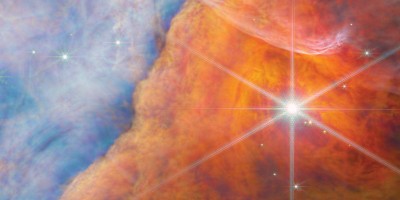The optical properties of the organic hazes that form in water-rich exoplanet atmospheres differ from those that form in nitrogen-rich atmospheres. This difference in optical properties can have an observable effect on spectral observations of exoplanets and could impact the interpretation of current and upcoming JWST observations.

References
Kreidberg, L. et al. Clouds in the atmosphere of the super-Earth exoplanet GJ1214b. Nature 505, 69–72 (2014). This paper reports the presence of clouds and/or hazes in the sub-Neptune exoplanet, GJ1214b.
Gao, P. et al. Aerosol composition of hot giant exoplanets dominated by silicates and hydrocarbon hazes. Nat. Astron. 4, 951–956 (2020). In this paper the authors show that exoplanet atmospheres with planetary equilibrium temperatures below 950 K are dominated by organic hazes.
Hörst, S. M. et al. Haze production rates in super-Earth and mini-Neptune atmosphere experiments. Nat. Astron. 2, 303–306 (2018). This paper reports great diversity in haze production rates in super-Earth and mini-Neptune atmospheres.
Khare, B. N. et al. Optical constants of organic tholins produced in a simulated Titanian atmosphere: From soft X-ray to microwave frequencies. Icarus 60, 127–137 (1984). This paper reports the optical constants of Titan haze analogues across a wide wavelength range.
He, C. et al. Sulfur-driven haze formation in warm CO2-rich exoplanet atmospheres. Nat. Astron. 4, 986–993 (2020). This paper describes the PHAZER chamber used to simulate complex exoplanet atmospheric conditions.
Additional information
Publisher’s note Springer Nature remains neutral with regard to jurisdictional claims in published maps and institutional affiliations.
This is a summary of: Chao, H. et al. Optical properties of organic haze analogues in water-rich exoplanet atmospheres observable with JWST. Nat. Astron. https://doi.org/10.1038/s41550-023-02140-4 (2023).
Rights and permissions
About this article
Cite this article
Organic hazes will impact JWST observations of water-rich exoplanets. Nat Astron 8, 162–163 (2024). https://doi.org/10.1038/s41550-023-02141-3
Published:
Issue Date:
DOI: https://doi.org/10.1038/s41550-023-02141-3
- Springer Nature Limited


